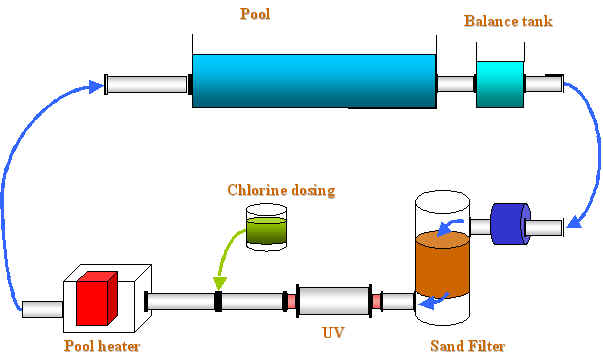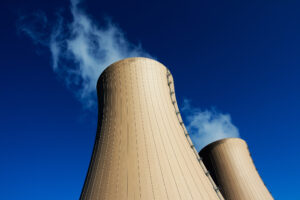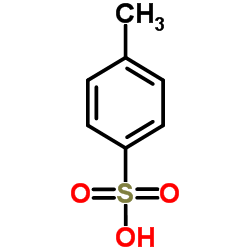Maintaining a clean, safe, and healthy water environment in pools and spas is essential for both comfort and safety. Over the years, innovative water treatment technologies have transformed how pool and spa owners manage water quality. This article explores key aspects of pool and spa water treatment, from traditional methods to modern, innovative, cutting-edge solutions, thus helping you make informed decisions for your aquatic environment.
Water Treatment in Swimming Pool
Effective pool and spa water treatment begins with a solid understanding of water chemistry. Key parameters like pH, chlorine levels, alkalinity, and calcium hardness are crucial in maintaining balanced water. So, it is necessary to keep these parameters within recommended ranges to prevent issues such as scaling, corrosion, and algae growth. For example, the CDC recommends a pH 7.0 – 7.8 and a chlorine concentration of at least 1 ppm in pools. However, if cyanuric acid or other chlorine products contain this acid, the recommendation is a pH of 7.0 – 7.8 and a chlorine concentration of at least 2 ppm. As a result, it is necessary to monitor these parameters closely to enable swift responses to changes.

Another important consideration in water treatment systems is assessing the types and effects of contaminants. Pool and spa water can accumulate a variety of contaminants, including organic matter (like sweat and body oils), bacteria, algae, and debris. These contaminants can lead to cloudy water, unpleasant odors, and health risks such as skin and eye irritation. When left unattended, contamination could even lead to respiratory issues. In addition, they can cause damage to pool equipment, leading to costly repairs or replacements. Understanding the contaminants’ types and effects underscores the importance of proper water treatment practices.
Traditional Water Treatment Methods
Chlorination has been the cornerstone of pool and spa water treatment long before the introduction of innovative approaches. This process involves adding chlorine to the water, where it acts as a powerful disinfectant, killing bacteria and other harmful microorganisms. Chlorination is highly effective and relatively easy to manage, making it a popular choice for pool owners. However, it does have its limitations, including the potential for harsh chemical smells, skin irritation, and the formation of harmful byproducts like chloramines.
Saltwater systems offer an alternative process to traditional chlorination. The process entails adding salt to the pool water. Then, a saltwater chlorinator converts the salt into chlorine through electrolysis. This method provides a softer feel to the water and reduces the need for manual chlorine addition. While saltwater systems offer a more natural swimming experience and lower maintenance, they require careful monitoring to prevent the buildup of salt, which can lead to corrosion of pool equipment.
Innovative Water Treatment Methods
Innovate pool and spa water treatment methods are gradually usurping traditional approaches due to their higher efficiency. The following sections highlight some examples.
UV-C Water Treatment
UV-C treatment is an innovative approach that uses ultraviolet light to disinfect pool and spa water. When water passes through a UV-C system, the light penetrates harmful microorganisms, disrupting their DNA and rendering them inactive. This is one of the most effective sanitizing methods that can destroy up to 99.9% of microorganisms in pools. Thereby reducing the need for chlorine by 50 to 80%. This process effectively sanitizes the water without adding chemicals, reducing the overall chemical load. UV-C treatment is particularly beneficial for lowering chlorine usage and minimizing the formation of harmful byproducts. Thus making it a popular choice for eco-conscious pool owners. However, deploying this system comes at a higher upfront cost, which proves profitable in the long term as it is low maintenance. A typical UV-C treatment system diagram is below.

Courtesy: lenntech
Ozone Generator Water Treatment
Ozone generators provide another innovative approach to water treatment. These systems produce ozone, a powerful oxidizer that quickly eliminates bacteria, viruses, and other contaminants from the water. Ozone breaks down organic matter, leaving the water clean and clear. Similar to UV-C treatment, ozone generators reduce reliance on chlorine. Hence this leads to a more natural swimming experience with fewer chemical odors and less skin irritation. A typical ozone generator system diagram is below.

Courtesy: Oxidation Technologies
Combined AOP Water Treatment
Advanced Oxidation Processes (AOP) combine UV-C treatment and ozone generation to create an even more powerful water treatment solution. In AOP systems, UV-C light and ozone work together to produce hydroxyl radicals, highly reactive molecules that destroy a wide range of contaminants. AOP systems offer enhanced water quality by effectively eliminating pathogens, organic compounds, and even some chemical residues. The result is crystal-clear water that requires little or no chemical maintenance.
SMART Water Treatment Systems
Smart water monitoring systems are integral to innovative pool and spa water treatment. The following sections highlight some common intelligent system solutions.
Real-Time Water Quality Sensors
Real-time water quality sensors are at the forefront of modern pool and spa maintenance. These sensors continuously monitor key parameters such as pH, chlorine levels, and temperature, providing instant feedback on water quality. Also, they provide remote access to data via smartphone applications or other automated systems for seamless water management. Detecting and addressing issues before they become problems is one of the most significant advantages of real-time monitoring, ensuring a safe and enjoyable swimming environment. Data from these sensors determines the operation of treatment systems such as ozone generators, UV systems, and chemical feeders.
An excellent example of a modern water quality sensor is Alpha’s multiparameter sonde. This device is capable of measuring at least five parameters, including those important for pools and spas, like pH, conductivity, and temperature. They come in a variety of standard and customizable configurations, with the capability of both analog and digital communication. Another great helpful offering in pool and spa water treatment is Alpha’s amperometric RC67 and RC68 chlorine sensors. These sensors offer precise, continuous measurement of free and total chlorine with a summary of their features as follows:
- Wide Measurement Range: Adjustable from 0-2 ppm to 0-100 ppm.
- Versatile Outputs: Supports analog (4-20 mA or 0-5 V) and digital (RS-485 MODBUS RTU) formats.
- High Accuracy and Resolution: Provides accuracy of 0.2 ppm or 4% and a resolution of 0.01 ppm.
- Temperature Compensation: Integrated to maintain performance across 0 to 50°C.
- Low Maintenance: Requires monthly calibration with a quick response time (T90 in 120 seconds).
- Robust Design: Constructed from durable materials like PVC, CPVC, ABS, and Ryton.
Pool Chemical Feeders
Automatic chemical feeders offer an innovative treatment solution for pools utilizing chemical treatment. These systems automatically dispense the necessary chemicals to maintain a balanced water chemistry. They achieve accurate dosing by working with real-time water quality sensors, thus taking the guesswork out of pool maintenance. By continuously monitoring water conditions and adjusting chemical levels, automatic feeders ensure consistent water quality, reduce chemical waste, and save time for pool owners.
Eco-Friendly Water Treatment
Currently, with an emphasis on minimizing the effects of human activities on the environment, eco-friendly treatment solutions are on the rise. Some standard options include:
- Natural Pool Filtration Systems: These systems use biological processes to maintain water quality, offering an eco-friendly alternative to traditional systems. They rely on plants, beneficial bacteria, and natural filtration media to break down contaminants and keep the water clean. Natural pools, which often feature a separate regeneration zone with aquatic plants, are gaining popularity because they provide a chemical-free swimming experience. The result is a sustainable, low-maintenance pool that blends seamlessly with the natural environment.
- Sustainable Chemicals: Sustainable pool chemicals are an excellent option for those who prefer traditional water treatment methods but want to reduce their environmental impact. These chemicals are formulated to be less environmentally harmful while still effectively maintaining water quality. Examples include enzyme-based and natural mineral sanitizers. By choosing biodegradable, non-toxic, or low-impact chemicals, pool owners can enjoy the benefits of clean water without contributing to pollution.
Innovative Pool and Spa Water Treatment with Alpha Measurement Solutions
If you’re looking to enhance the water quality of your pool and spa or setting up a new one, then consider integrating innovative treatment technologies. Alpha Measurement Solutions offers advanced liquid sensing technology, including real-time water quality sensors and automated chemical monitoring systems. Our sensors cut across parameters such as pH, conductivity, chlorine level, and ORP. We also have an array of instrumentation, including controllers, monitors, transmitters, and analyzers to suit your needs. Contact us today so that we get started on your next pool and spa water treatment project.




